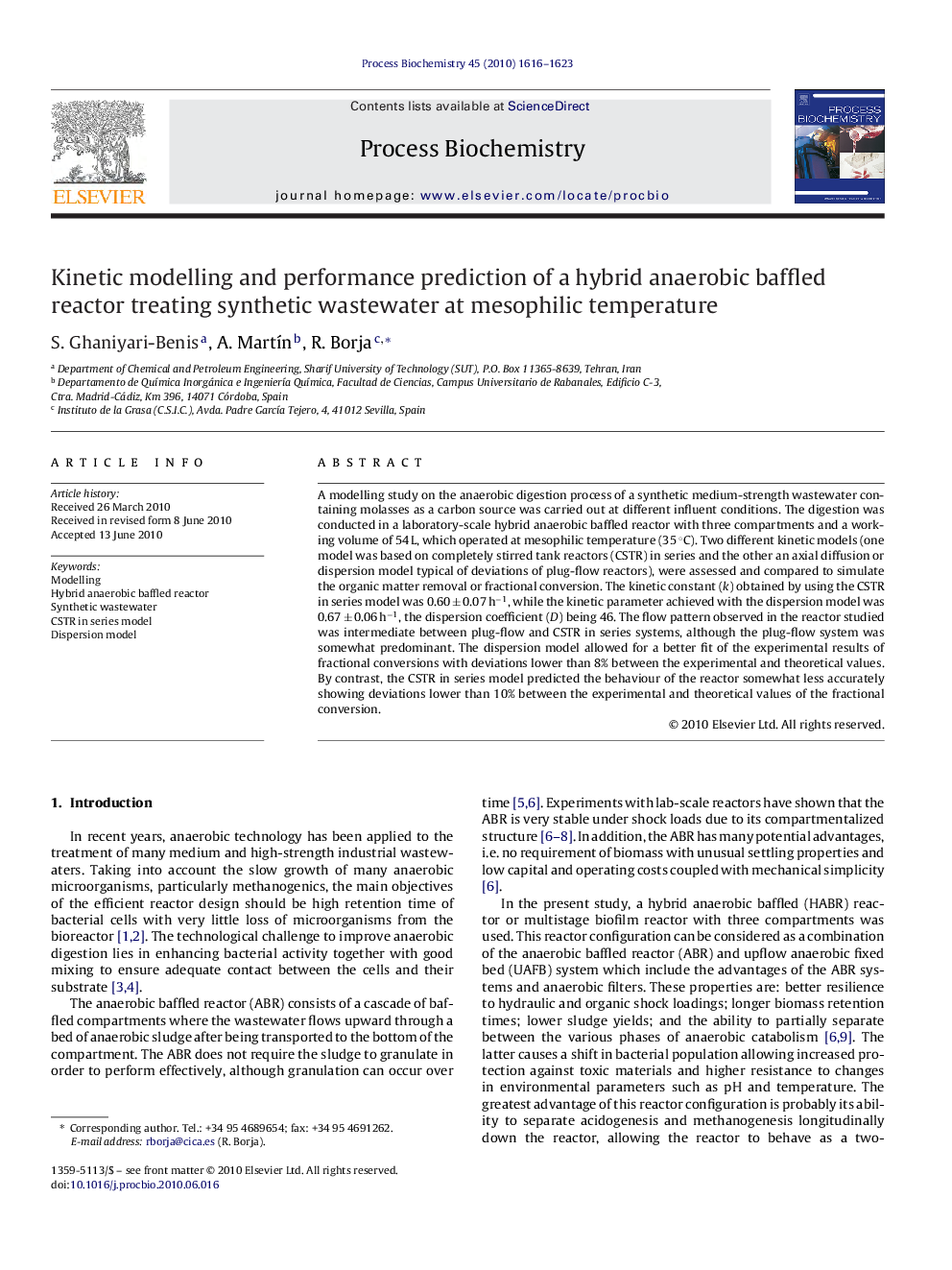| Article ID | Journal | Published Year | Pages | File Type |
|---|---|---|---|---|
| 35503 | Process Biochemistry | 2010 | 8 Pages |
A modelling study on the anaerobic digestion process of a synthetic medium-strength wastewater containing molasses as a carbon source was carried out at different influent conditions. The digestion was conducted in a laboratory-scale hybrid anaerobic baffled reactor with three compartments and a working volume of 54 L, which operated at mesophilic temperature (35 °C). Two different kinetic models (one model was based on completely stirred tank reactors (CSTR) in series and the other an axial diffusion or dispersion model typical of deviations of plug-flow reactors), were assessed and compared to simulate the organic matter removal or fractional conversion. The kinetic constant (k) obtained by using the CSTR in series model was 0.60 ± 0.07 h−1, while the kinetic parameter achieved with the dispersion model was 0.67 ± 0.06 h−1, the dispersion coefficient (D) being 46. The flow pattern observed in the reactor studied was intermediate between plug-flow and CSTR in series systems, although the plug-flow system was somewhat predominant. The dispersion model allowed for a better fit of the experimental results of fractional conversions with deviations lower than 8% between the experimental and theoretical values. By contrast, the CSTR in series model predicted the behaviour of the reactor somewhat less accurately showing deviations lower than 10% between the experimental and theoretical values of the fractional conversion.
